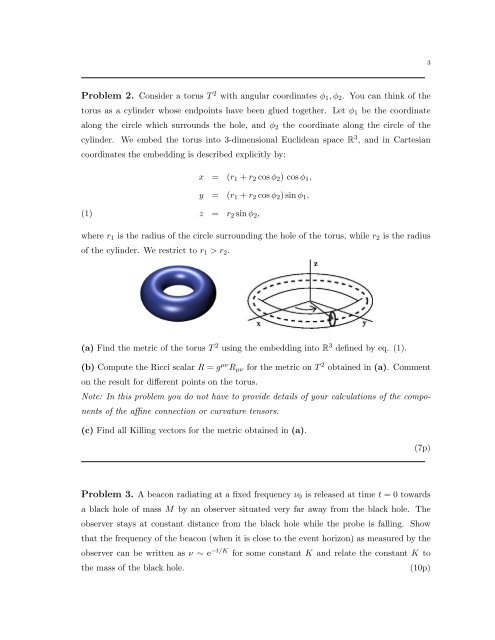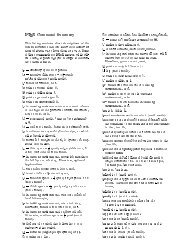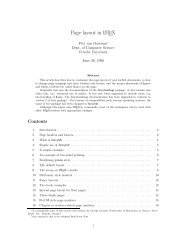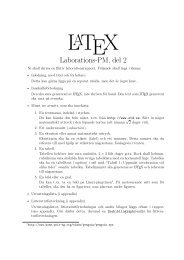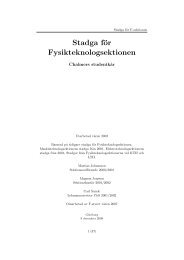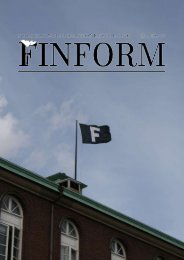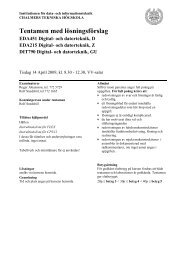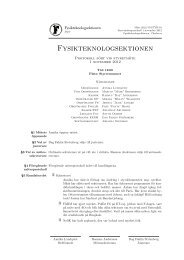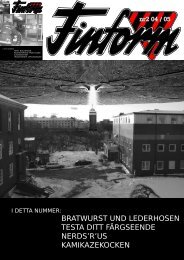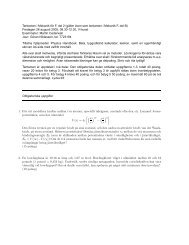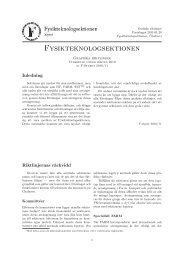HOME EXAM - Ftek
HOME EXAM - Ftek
HOME EXAM - Ftek
- No tags were found...
You also want an ePaper? Increase the reach of your titles
YUMPU automatically turns print PDFs into web optimized ePapers that Google loves.
3Problem 2. Consider a torus T 2 with angular coordinates φ 1 , φ 2 . You can think of thetorus as a cylinder whose endpoints have been glued together. Let φ 1 be the coordinatealong the circle which surrounds the hole, and φ 2 the coordinate along the circle of thecylinder. We embed the torus into 3-dimensional Euclidean space R 3 , and in Cartesiancoordinates the embedding is described explicitly by:x = (r 1 + r 2 cos φ 2 ) cos φ 1 ,y = (r 1 + r 2 cos φ 2 ) sin φ 1 ,(1)z = r 2 sin φ 2 ,where r 1 is the radius of the circle surrounding the hole of the torus, while r 2 is the radiusof the cylinder. We restrict to r 1 > r 2 .(a) Find the metric of the torus T 2 using the embedding into R 3 defined by eq. (1).(b) Compute the Ricci scalar R = g µν R µν for the metric on T 2 obtained in (a). Commenton the result for different points on the torus.Note: In this problem you do not have to provide details of your calculations of the componentsof the affine connection or curvature tensors.(c) Find all Killing vectors for the metric obtained in (a).(7p)Problem 3. A beacon radiating at a fixed frequency ν 0 is released at time t = 0 towardsa black hole of mass M by an observer situated very far away from the black hole. Theobserver stays at constant distance from the black hole while the probe is falling. Showthat the frequency of the beacon (when it is close to the event horizon) as measured by theobserver can be written as ν ∼ e −t/K for some constant K and relate the constant K tothe mass of the black hole.(10p)


